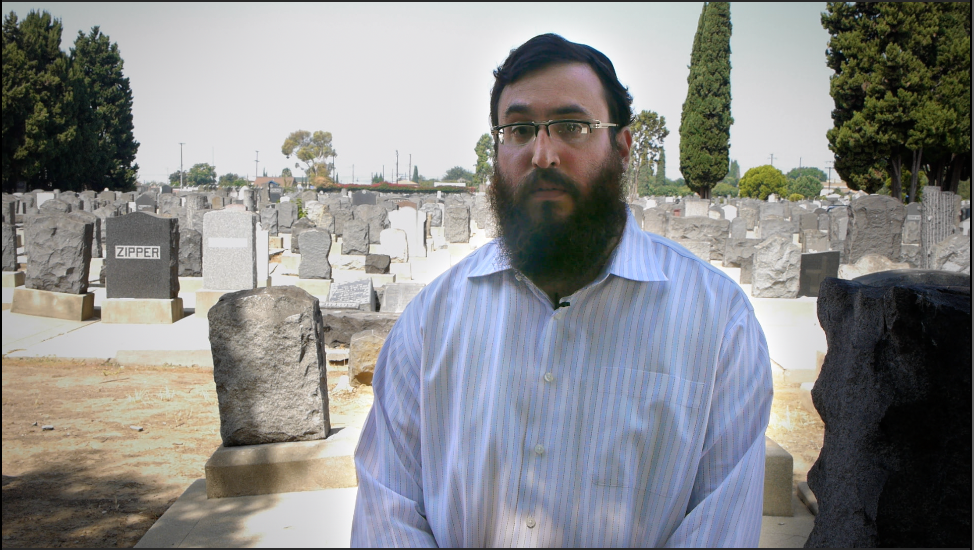In some of the quick tips I’ve been posting recently, you might have noticed that I was using the same footage of a man talking in a graveyard. I know it’s not exactly the peachiest of footage to be using for tutorial footage.
The footage is from a short docu piece that I’m working on about a local cemetery that’s in really bad shape. I read a story about it in the L.A. Times early last summer. Visuals of an ailing cemetery falling apart in the center of East Los Angeles started popping up in my mind. I could see the finished piece in my head even though I hadn’t gone to the location.
Usually, when images start popping up in my noggin, I know that I’m on to something and that I need to explore the possibility of setting up the shoot. So, I called the man responsible for the restoration of the cemetery and we agreed on a date to record the interview and b-roll.
That shoot happened eight long months go. In the interim, I’d like to say that “life happened.” But the truth is that sometimes it’s very hard for me to edit my own material. I see the mistakes, mostly. I have a feeling I’m not the only person in the history of the moving image who feels this way.
And so I had a realization the other day which helped me get through the edit. For the filmmaker/editor, the work is ultimately a subtractive process. It involves taking a bunch of “stuff” and removing extra “stuff.” In doing so, the gaps appear. This is when you don’t have everything you want. The project then begins to feel like a block of swiss cheese. You do whatever you can do to fill those holes – be it with b-roll, stills, VO, music, you name it.
However, the experience for the viewer is additive. They have never seen the material before. All the information is new and (hopefully) it is being experienced in real time. While mistakes and holes in the piece are usually easy to spot, the full breadth of what is missing will not likely be known.
In the best case scenario, as shooter and editor, I’ve done better than my best to plug the cheese and cut together the best story possible, given the footage. But other times, I know that it’s OK to let the mistakes show up, as long as it supports the story. Admittedly I have a few moments like that in the cemetery piece.
This cuts to the heart of the reason why I go after a passion project whenever I have the time. Shooting keeps me honed in on the production process. I also feel that, as an editor, I need to get out on set more often to see what’s happening. It’s very easy for editors to get stuck in the bay, frustrated when getting tossed a block of swiss cheese. What we don’t experience are the realities of life getting in the way of making everything perfect on set.
In my opinion, editing should start in the camera or even before the shoot (with good planning). With logging data already able to be applied to footage as it’s being recorded or very shortly thereafter, now is a very exciting time to be an editor. The thing is, the editors know what they need best – not the camera manufacturers. Now is a very important time for the editors’ voices to be heard.
If there’s a way to transfer logging information on set then onto the footage at faster-than-ever rates, this will decrease the amount of time the editor needs to prep the footage. I see this as a good thing, because it allows the editor to begin working with a sorted library of material, almost instantly searchable.
I’m being purposefully vague about what these processes will be to get the footage logged before it gets to the editor because I don’t really know what will be invented next. But I am putting a lot of thought into it. As I’ve mentioned in previous posts, some of these tools are almost ready for primetime.
It’s going to be a very exciting couple of years. I think we’re going to see production and post merge in ways never before experienced.
